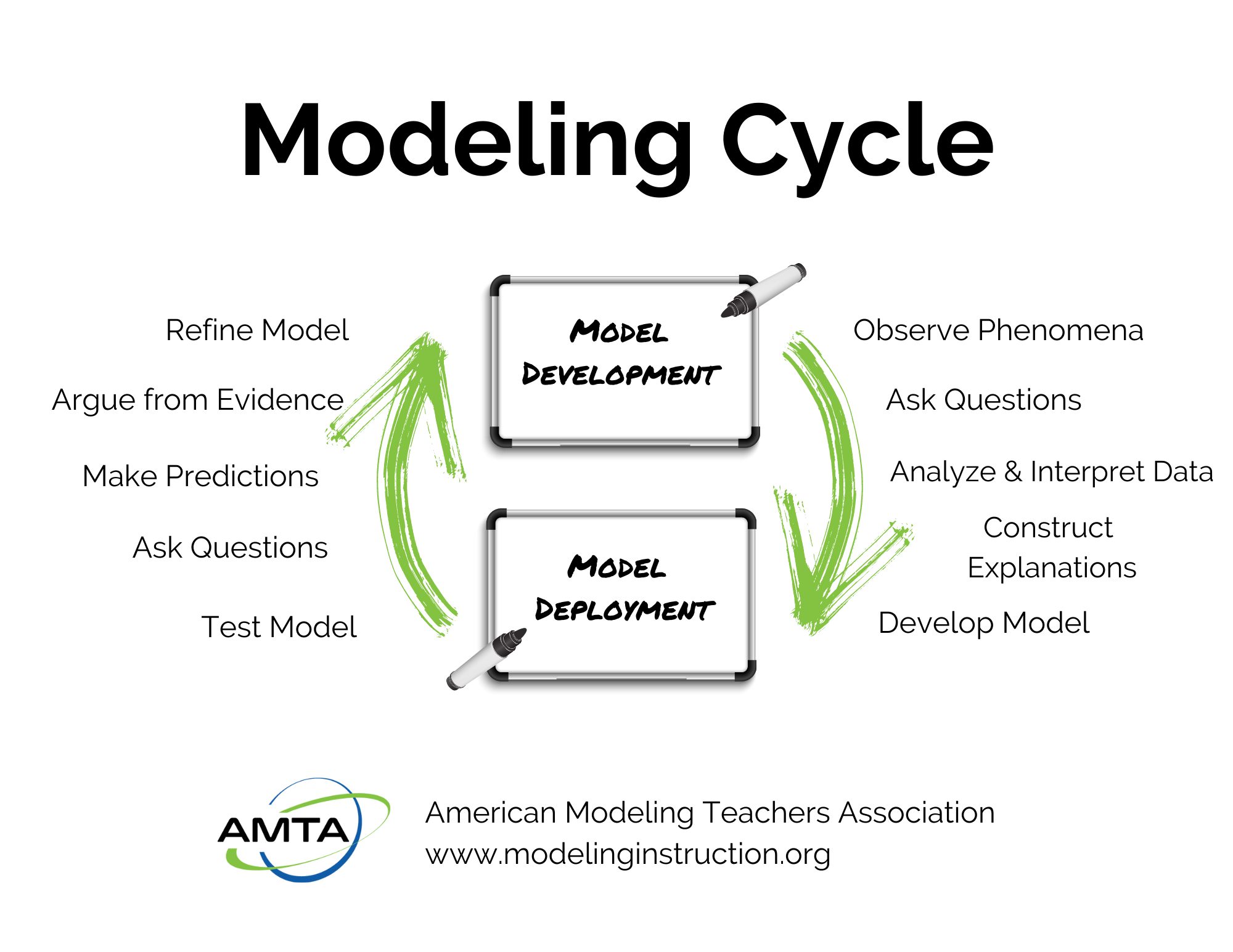The Modeling Method: A Synopsis
The Modeling Method has been intentionally developed to correct many weaknesses of the lecture-demonstration method of instruction typically seen in STEM classrooms. These weaknesses include the fragmentation of knowledge, student passivity, and the persistence of naive beliefs about the physical world.
- Instruction is organized into modeling cycles which move students through all phases of model development, evaluation and application in concrete situations — thus promoting an integrated understanding of modeling processes and acquisition of coordinated modeling skills.
- The teacher sets the stage for student activities, typically with a demonstration and class discussion to establish common understanding of a question to be asked of nature. Then, in small groups, students collaborate in planning and conducting experiments to answer or clarify the question.
- Students are required to present and justify their conclusions in oral and/or written form, including a formulation of models for the phenomena in question and evaluation of the models by comparison with data.
- Technical terms and concepts are introduced by the teacher only as they are needed to sharpen models, facilitate modeling activities and improve the quality of discourse.
- The teacher is prepared with a definite agenda for student progress and guides student inquiry and discussion in that direction with “Socratic” questioning and remarks.
- The teacher is equipped with a taxonomy of typical student misconceptions to be addressed as students are induced to articulate, analyze and justify their personal beliefs.
Student-Centered Instructional Design
Scientists and mathematicians learn by doing: they construct and deploy models of the real world and test their ability to predict new phenomena. Our classrooms focus on turning students into scientists to replicate this process.
Coherent Instructional Objectives
We focus upon adhering to systematic and organized objectives in all STEM content areas. This makes concepts more meaningful to students, and also reflects the true nature of scientific and mathematical practice.
We strive to
- Engage students in understanding the physical world by constructing and using scientific models to describe, explain, predict and control physical phenomena.
- Provide students with basic conceptual tools for modeling physical objects and processes, especially mathematical, graphical and diagrammatic representations.
- Familiarize students with a small set of basic models as the content core of science, technology, engineering, and mathematics (STEM).
- Develop insight into the structure of scientific knowledge by examining how models fit into theories.
- Show how scientific knowledge is validated by engaging students in evaluating scientific models through comparison with empirical data.
- Develop skill in all aspects of modeling as the procedural core of scientific knowledge.

